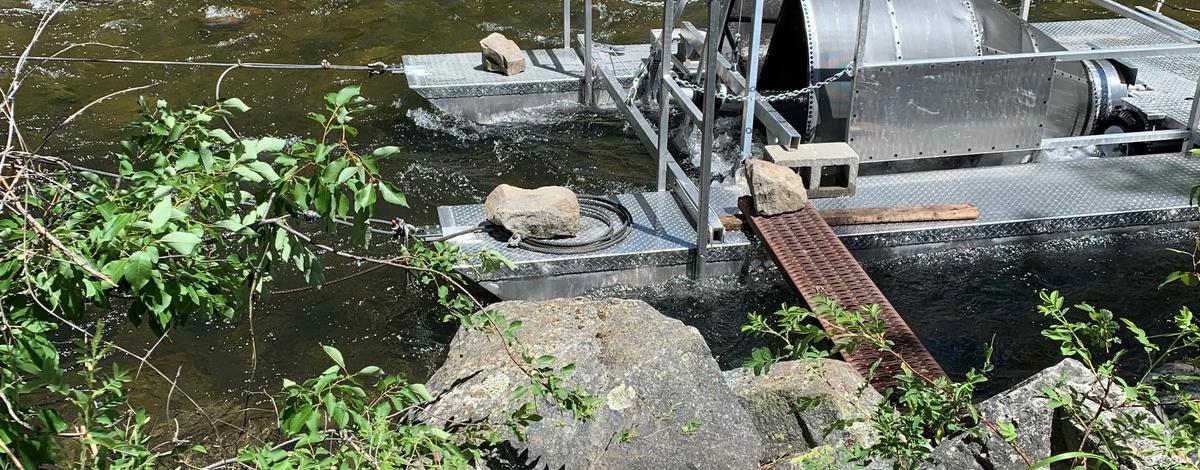Fisheries staff in the Salmon region are busy preparing for a dynamic and productive early spring field season. Each year around early-to-mid March, five juvenile rotary screw traps are installed and are generally operated from March until November. In the Salmon region, three rotary screw traps are operated on the Lemhi River and tributaries, one on the North Fork of the Salmon River, and one on the Pahsimeroi River. Rotary screw traps are an important tool used to capture and tag wild juvenile Chinook Salmon, steelhead, and other species of fish. For more information on how rotary screw traps work, click here. Fish captured in screw traps are identified, weighed and measured, and biological samples are taken to provide us more insight into age structure and genetics. Most trout and salmon captured at screw traps receive a PIT (passive integrated transponder) tag to track their movement and survival (read more about this here).
In addition to operating rotary screw traps, five fish weirs are installed in mid-March and are operated until mid-May. Currently five weirs are installed in tributaries around the Salmon region each year with the goal of capturing spawning adult steelhead. Capturing adult steelhead allows IDFG fisheries staff to assess trends in distribution and abundance of steelhead in the region. Various biological samples are taken from steelhead to tell us about more about their age structure and genetics.
Fisheries fieldwork generally starts in mid-March and continues through late fall or early winter, when our local rivers and streams begin to freeze. If you see us out in the field, please stop by and say hello so we can share more about our exciting work with you.

